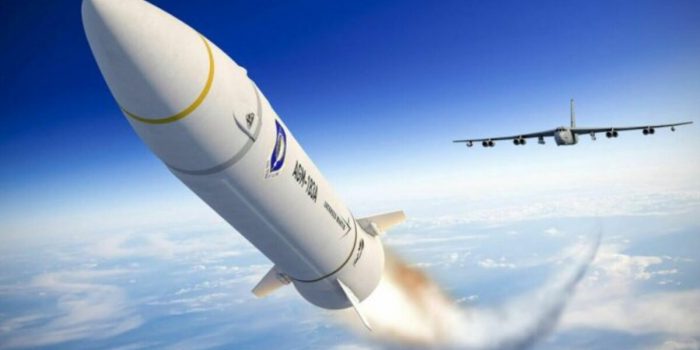Chinese scientists have figured out how to nearly double the range of hypersonic missiles, according to a recently published paper. The study could increase fears that China’s growing hypersonic missile program may be used to defeat U.S. defenses.
The new missile tech upgrade is based on the fact that hypersonics often use air-breathing technology. To increase fuel efficiency, when the missile reaches hypersonic speed, the air is slowed to below the speed of sound before it enters the engine’s combustion chamber.
The Chinese researchers managed to build a prototype engine with a groundbreaking fuel efficiency of 79 percent. The team accomplished this feat by using the subsonic-combustion mode during a ground test that simulated a flight at an altitude of 15.5 miles at Mach 6, according to researchers from the National University of Defence Technology in Changsha, Hunan. The paper was first reported by the South China Morning Post.
“Such efficiency was considered ‘remarkable’ – nearly doubling that of a traditional scramjet engine working in similar conditions,” noted Ma Likun, team lead of the study, an associate professor at the National University.
Taylor Fravel, an expert on Chinese nuclear weapons policy who was unaware of the test, said a hypersonic glide vehicle armed with a nuclear warhead could help China “negate” US missile defense systems which are designed to destroy incoming ballistic missiles.
“Hypersonic glide vehicles?fly at lower trajectories and can maneuver in flight, which makes them hard to track and destroy,” said Fravel, a professor at the Massachusetts Institute of Technology.
The prototype engine was put to the test in a ground simulation of a flight at an altitude of 25 kilometers (15.5 miles) at Mach 6 speed (six times the speed of sound), and it produced fuel efficiency of 79 percent, which is nearly twice as high as a conventional scramjet engine under the same circumstances.
According to the researchers, the primary fuel component for the prototype engine is boron powder, which is grey in color and can burn vigorously when exposed to oxygen.
To enhance the combustion process, the researchers introduced the boron powder into the combustion chamber using multiple nozzles to create additional shock waves. These shock waves expanded and flowed toward the air entrance, slowing down the speed of the fresh air and increasing the interaction between the boron powder and air molecules.
As a result, the chemical reactions in the engine were enhanced, leading to a higher combustion temperature and greater thrust, allowing the engine to cruise farther and longer, as claimed by the researchers.
“A solid scramjet engine has numerous advantages, such as simple structure, high volume-specific impulse, high flame stability, and the potential to work in a wide speed range,” Likun’s team wrote in the paper.
Hypersonic missiles, which can reach up to Mach 10, are expected to play a role in future conflicts. The missiles are also highly agile and reportedly can evade current missile defense systems.


